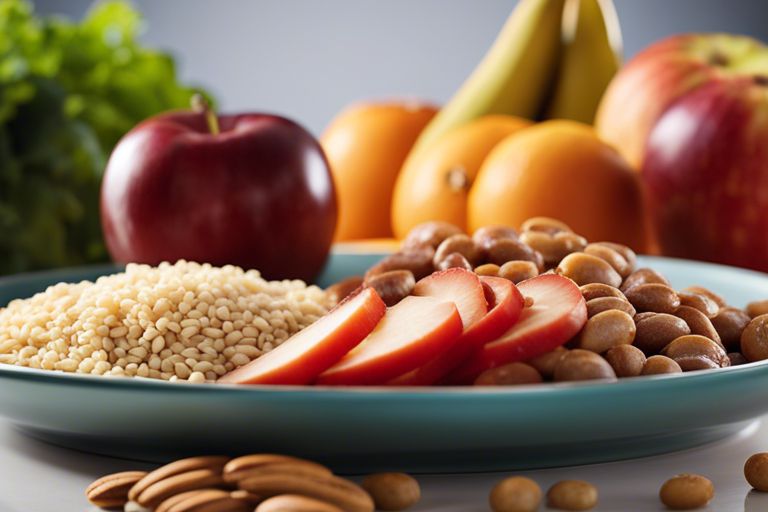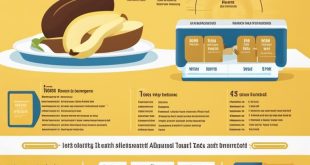Most parents have heard about the BRAT diet – bananas, rice, applesauce, and toast – as the go-to remedy for soothing upset stomachs and recovering from gastrointestinal issues in children. However, recent research and recommendations from healthcare professionals suggest that this traditional diet may not be the most effective or beneficial option for recovering from stomach bugs. In fact, relying solely on the BRAT diet could prolong illness and lead to nutritional deficiencies. Let’s explore why it may be time to reconsider the use of the BRAT diet and discover more suitable alternatives for treating stomach issues in children.

Table of Contents
Historical Perspective of the BRAT Diet
Origin and Popularity
For years, the BRAT diet has been a go-to recommendation for individuals suffering from gastrointestinal issues such as diarrhea, vomiting, or following a stomach flu. The name ‘BRAT’ stands for Bananas, Rice, Applesauce, and Toast, which are thought to be gentle on the stomach and easy to digest. This diet gained popularity due to its simplicity and perceived ability to alleviate digestive discomfort.
Past Recommendations and Uses
The BRAT diet was traditionally advised to help manage symptoms of gastrointestinal distress, with its bland and low-fiber foods believed to reduce irritation and provide a break for the digestive system. However, in recent years, there has been a shift in recommendations by healthcare professionals. The severely restrictive nature of the diet has been criticized for lacking vital nutrients needed for overall health and recovery.
The BRAT diet, once a staple for soothing upset stomachs, is now viewed with caution by healthcare providers due to its limitations in providing adequate nutrition for those in need of recovery. While it may still be beneficial for short-term relief of digestive issues, it is important to consult a healthcare professional for a more balanced and nutrient-dense approach to recovery.
The BRAT Diet in Modern Medicine
Current Medical Views
Now, as modern medicine evolves, the BRAT diet’s status as the go-to remedy for gastrointestinal issues in children and adults is being revisited. While once a staple recommendation for easing gastroenteritis symptoms, medical professionals are now exploring more comprehensive dietary solutions.
Criticisms and Limitations
With the emergence of new research, criticisms of the BRAT diet have surfaced. Medical experts now acknowledge that the diet’s restrictive nature may not provide sufficient nutrients for a swift recovery. Additionally, relying solely on bananas, rice, applesauce, and toast may delay the healing process and fail to address the root cause of the gastrointestinal distress.
A potential danger of the BRAT diet lies in its insufficient protein and fat content, which are crucial for maintaining the body’s energy levels and overall health. While these bland foods can help alleviate symptoms temporarily, a prolonged adherence to the diet may lead to nutrient deficiencies, especially in vulnerable populations such as children, the elderly, or individuals with chronic illnesses. It is imperative for healthcare providers to consider a more balanced approach to nutrition for optimal recovery.
Alternatives to the BRAT Diet
Advancements in Gastrointestinal Treatment
For the past few decades, the BRAT diet has been the go-to recommendation for gastrointestinal issues such as diarrhea and vomiting. However, recent advancements in gastrointestinal treatment have shown that continuing to rely solely on the BRAT diet may not be the most effective approach.
Comprehensive Dietary Approaches
On the other hand, comprehensive dietary approaches have gained popularity in the field of gastrointestinal health. These approaches focus on not only addressing the immediate symptoms but also on improving overall gut health and function. By incorporating a wide range of foods that are easy to digest and rich in necessary nutrients, these approaches aim to provide a more balanced and nourishing way to aid in recovery.
With comprehensive dietary approaches, individuals are encouraged to include a variety of foods such as bananas, rice, applesauce, toast, as well as other easily digestible fruits, vegetables, lean proteins, and whole grains. This approach ensures that the body receives a wider range of nutrients necessary for healing and recovery, compared to the limited variety allowed by the BRAT diet.

The Future of Dietary Recommendations for Gastrointestinal Recovery
Emerging Research and Perspectives
Keep up with the latest research and perspectives in the field of gastrointestinal recovery to stay informed about the most current dietary recommendations. Emerging research suggests that the traditional BRAT diet may not be the most effective approach for gastrointestinal recovery, and new insights could lead to more tailored and beneficial dietary recommendations for individuals dealing with digestive issues.
Integrative and Holistic Approaches
For a more comprehensive approach to gastrointestinal recovery, consider integrative and holistic approaches that address the body as a whole. These approaches combine traditional medical interventions with complementary therapies such as acupuncture, herbal remedies, and stress management techniques to support overall well-being and improve digestive health.
For instance, incorporating probiotics and prebiotics into your diet can help restore the balance of good bacteria in the gut, which is imperative for proper digestion and immune function. Integrating mindfulness practices such as yoga or meditation can also help reduce stress levels, which have been linked to gastrointestinal issues. By taking a holistic approach to gastrointestinal recovery, individuals can address the root causes of their issues and promote long-term healing.
Final Words
Now, while the BRAT diet has been a popular choice for easing digestive discomfort for many years, it may be time to consider moving on. It lacks important nutrients needed for overall health and recovery, and there are more balanced options available that can provide the same benefits without the restrictions. Consulting with a healthcare professional can help determine the best course of action for managing digestive issues and promoting a speedy recovery. So, it may be time to bid farewell to the BRAT diet and explore healthier alternatives for nourishing and supporting your body during times of digestive distress.
FAQ
Q: What is the BRAT diet?
A: The BRAT diet is a traditional dietary treatment for diarrhea, consisting of bananas, rice, applesauce, and toast. These bland, low-fiber foods are easy on the stomach and can help alleviate gastrointestinal distress.
Q: Is the BRAT diet still recommended for diarrhea?
A: While the BRAT diet was once a go-to remedy for diarrhea, experts now recommend a more balanced approach. The BRAT diet lacks vital nutrients and may not provide the necessary nourishment for a speedy recovery. It is best to consult a healthcare provider for personalized dietary advice.
Q: What alternatives are recommended instead of the BRAT diet?
A: Health professionals now recommend the “GREAT” diet for gastrointestinal issues, which includes bananas, rice, applesauce, toast, as well as eggs and tea. This well-rounded approach ensures you get the nutrients needed for recovery while being gentle on the digestive system. Remember to stay hydrated and gradually introduce other easy-to-digest foods as you start feeling better.
 hqsportz Personal Website | Tell Information about Sport, Fashion And Health
hqsportz Personal Website | Tell Information about Sport, Fashion And Health


